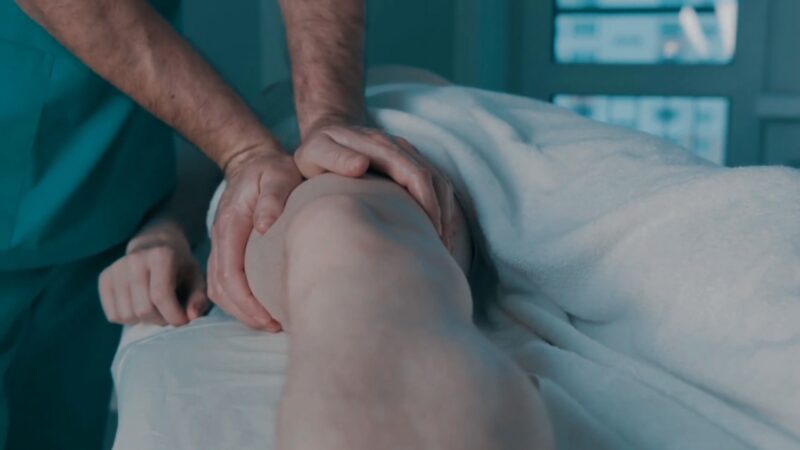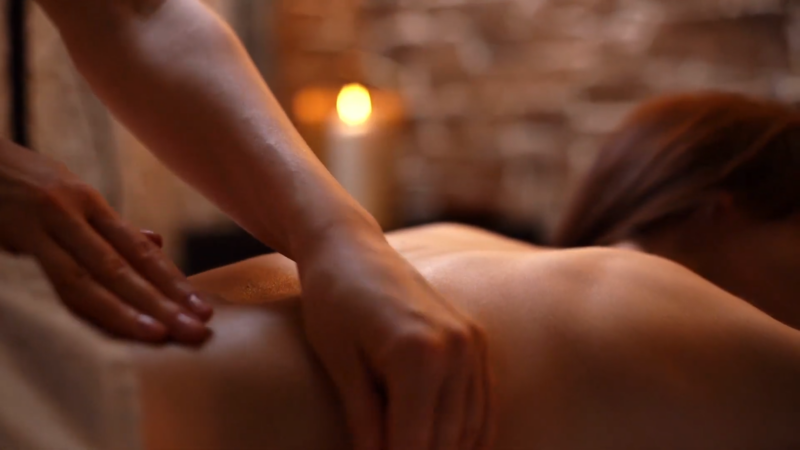The stresses of daily life, whether from work, family, or other commitments, can take a toll on both our physical and mental well-being. Amid these pressures, massage therapy stands out as a highly effective and often underappreciated tool for supporting overall wellness. Far from being just an occasional luxury, it has significant benefits that contribute to a healthier, more balanced life.
Understanding how massages support a healthy lifestyle can empower you to make it a regular part of your wellness routine.
6 Different Types of Massages and Their Unique Benefits

There isn’t a one-size-fits-all approach to massage. Different types offer unique benefits, depending on your needs and preferences.
1. Swedish Massage
Swedish massage (스웨디시) is the most common type, known for its gentle, relaxing strokes. It’s perfect for those new to massages or anyone looking to unwind and relieve stress.
2. Deep Tissue
Deep tissue massages are more intense, targeting the deeper layers of muscle and connective tissue. It’s ideal for those dealing with chronic pain or recovering from injuries.
3. Sports Massages
Designed for athletes, sports massages focus on preventing and treating injuries, as well as enhancing performance. It often includes stretching and is tailored to the specific sport.
4. Aromatherapy
This type of massage incorporates essential oils, which are believed to have various healing properties. The combination of massages and aromatherapy can enhance mood, relieve stress, and even boost immunity.
5. Hot Stone
Hot stone massages involve placing heated stones on specific parts of the body, which helps to relax muscles and improve circulation. It’s particularly effective for those with muscle tension and chronic pain.
6. Reflexology
Reflexology focuses on applying pressure to specific points on the feet, hands, and ears, which are believed to correspond to different organs and systems in the body. It’s a great option for those looking for a holistic approach to wellness.
Why Massage Is More Than Just a Treat

Many people think of massages as an occasional indulgence—a way to unwind after a stressful week. While it’s undoubtedly relaxing, they offer much more than temporary relief. It’s a proactive approach to maintaining your health and well-being.
1. Pain Relief
Massages are highly effective in managing pain, whether chronic or acute. Techniques like deep tissue massage can target specific areas of tension and discomfort, releasing knots and improving blood flow. This can alleviate conditions such as lower back pain, arthritis, and migraines.
2. Improved Circulation
Massages stimulate blood flow, which in turn delivers more oxygen and nutrients to your muscles and organs. Improved circulation also helps in the removal of waste products like lactic acid, which can build up in muscles and cause soreness.
3. Enhanced Flexibility
Regular massages can increase your flexibility by stretching the connective tissues and reducing stiffness. This is especially beneficial for athletes or anyone looking to improve their range of motion.
4. Boosted Immune System
Studies have shown that regular massages can boost your immune system by increasing the activity of natural killer cells, which fight off viruses and other pathogens. In a world where we’re constantly exposed to germs, a strong immune system is your best defense.
Mental Health Benefits

1. Stress Reduction
Stress is a silent killer, contributing to a host of health problems like heart disease, anxiety, and depression. Massages help lower cortisol levels (the stress hormone) and increase the production of serotonin and dopamine, which are responsible for feelings of happiness and well-being.
2. Better Sleep
If you struggle with insomnia or restless sleep, massages can help. The relaxation it provides can improve sleep quality by increasing delta waves, the brain waves connected to deep sleep. This ensures you wake up feeling refreshed and energized.
3. Mental Clarity and Focus
When your body is relaxed and free from pain, your mind can function more effectively. Massages help to clear mental clutter, improving concentration and focus, which is essential in both personal and professional life.
Emotional and Social Benefits

Increased Emotional Resilience
Life is full of ups and downs, and emotional resilience is what helps us bounce back from difficult situations. Massage therapy provides a safe space to let go of emotional stress, promoting a sense of peace and stability.
Improved Relationships
When you feel good physically and mentally, it naturally enhances your interactions with others. Whether it’s a partner, family, or friends, the positivity you gain from regular massage can improve your relationships and social life.
The Science Behind Massages – How They Work

Massage therapy isn’t just about feeling good; there’s a lot of science behind how and why it works. Here’s a look at some of the mechanisms involved:
- Release of Endorphins: Massages stimulate the release of endorphins, which are the body’s natural pain relievers. These chemicals interact with the receptors in your brain to reduce your perception of pain.
- Reduction of Cortisol: Cortisol is the hormone responsible for stress, and high levels of cortisol can lead to various health problems. Massage therapy helps to lower cortisol levels, reducing stress and its associated risks.
- Improved Blood Flow: Massages increase blood flow, which is essential for delivering oxygen and nutrients to your muscles and organs. This improved circulation also helps to remove waste products from your body.
- Muscle Relaxation: Massages help to relax muscles by reducing tension and increasing flexibility. This is particularly important for those who experience chronic muscle tightness or stiffness.
- Stimulation of the Parasympathetic Nervous System: The parasympathetic nervous system is responsible for the body’s rest and digestion functions. Massage stimulates this system, promoting relaxation and reducing the body’s fight or flight response.
Common Myths

Despite its benefits, massage therapy is often surrounded by myths and misconceptions:
Deep Tissue Massages Should Always Be Painful
Deep tissue massages can be intense, but it should never be painful. A skilled therapist will apply the right amount of pressure to avoid discomfort.
Massages Are Only For Adults
Massages can benefit people of all ages, including children and the elderly. Pediatric massage, for example, can help with conditions like colic and asthma.
You Need to Be Injured to Get a Massage
You don’t need to be injured to benefit from massage. It’s a proactive way to maintain your health and prevent injuries.
Conclusion
Incorporating massages into your routine isn’t just about pampering yourself; it’s about taking proactive steps to support your overall health and well-being.
Whether you’re dealing with chronic pain, or stress, or simply looking to enhance your quality of life, massages offer a natural and effective solution.
Related Posts:
- How Jewelry Plays a Role in Holistic Wellness…
- Join The Fun: Finding Hobbies To Suit Your Lifestyle
- How To Care for Your Face Skin ─ A Beginner’s Guide…
- Essential Pond Maintenance Tips for a Healthy Ecosystem
- The Role of RNGs and Algorithms in Slot Machine Tech
- Cryptocurrency Wallets and Their Role in the NFT Market







